Fly fishing in Montana
Montana is renowned for its beautiful fly fishing rivers. Enthusiasts come from all over the country to float the rivers and fish. For me, the idea of wading into cold water, albeit with waterproofs on, to wait for hours, to maybe catch one fish, did not sound very appealing. But we were going to be spending a few days at our friend’s beautiful property on The Big Hole River, one of the premier fly fishing rivers in Montana, so I was open to see what all the fuss was about.
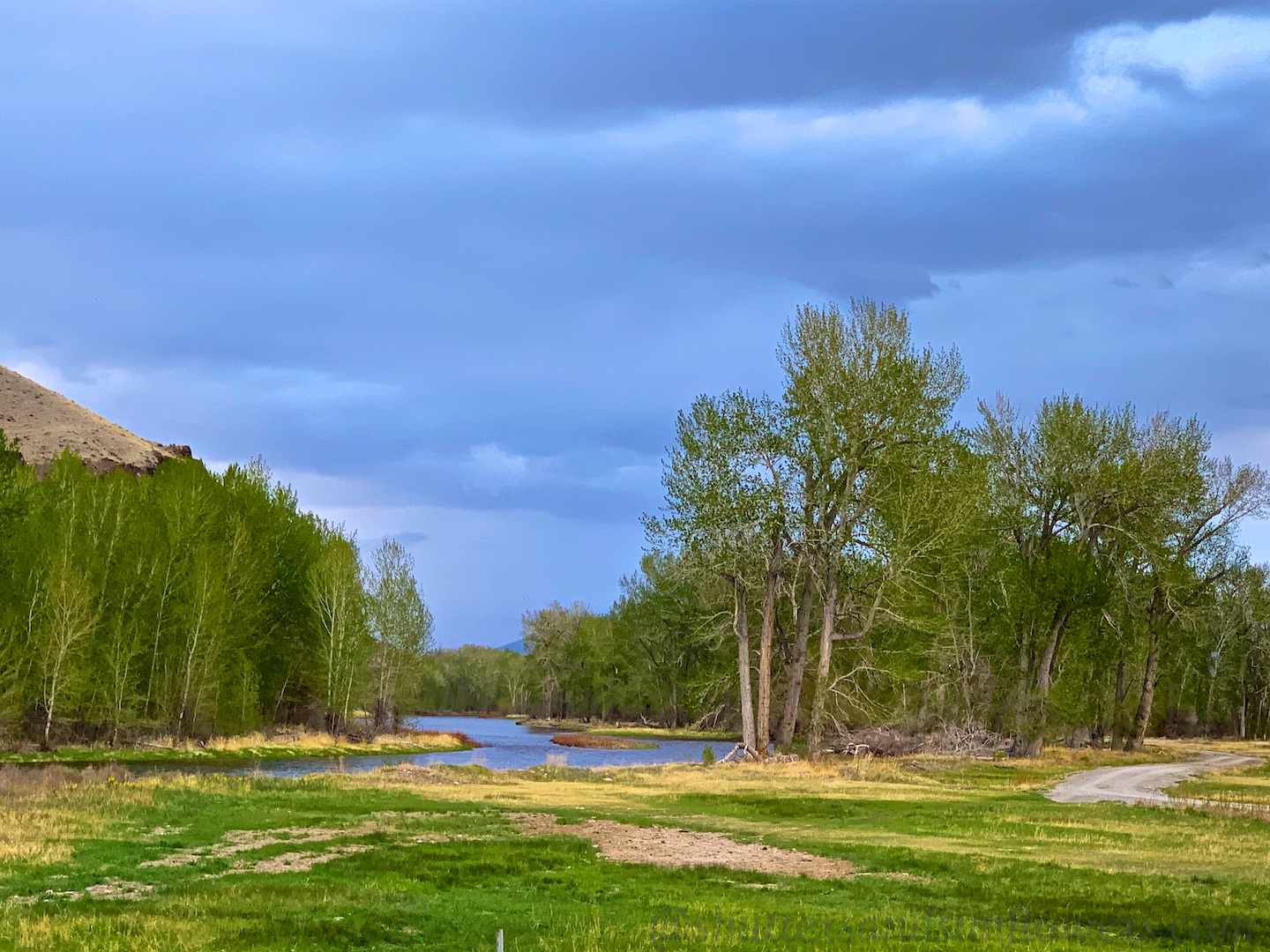
The Big Hole River, Montana
I’ve learned that there’s always a story if you look for it, and even with a river I found one! The Lewis and Clark expedition discovered and named the Jefferson River in 1805, also naming its three tributaries, Philosophy, Philanthropy and Wisdom in honor of President’s Jefferson’s virtues. The Wisdom was the most western of the three. Fur trappers later renamed it and the valley where it’s situated, The Big Hole, a traditional term for a winter shelter. A community about 50 miles to the west still carries the name Wisdom today. The other two tributaries eventually became known as the Ruby and Beaverhead Rivers. But we floated the Big Hole and it was thrilling. The water spluttered and rushed ahead of us, bald eagles circled the sky and one of us even caught a fish. I was excited for the our next day out. But first we had some other places on the itinerary to explore.
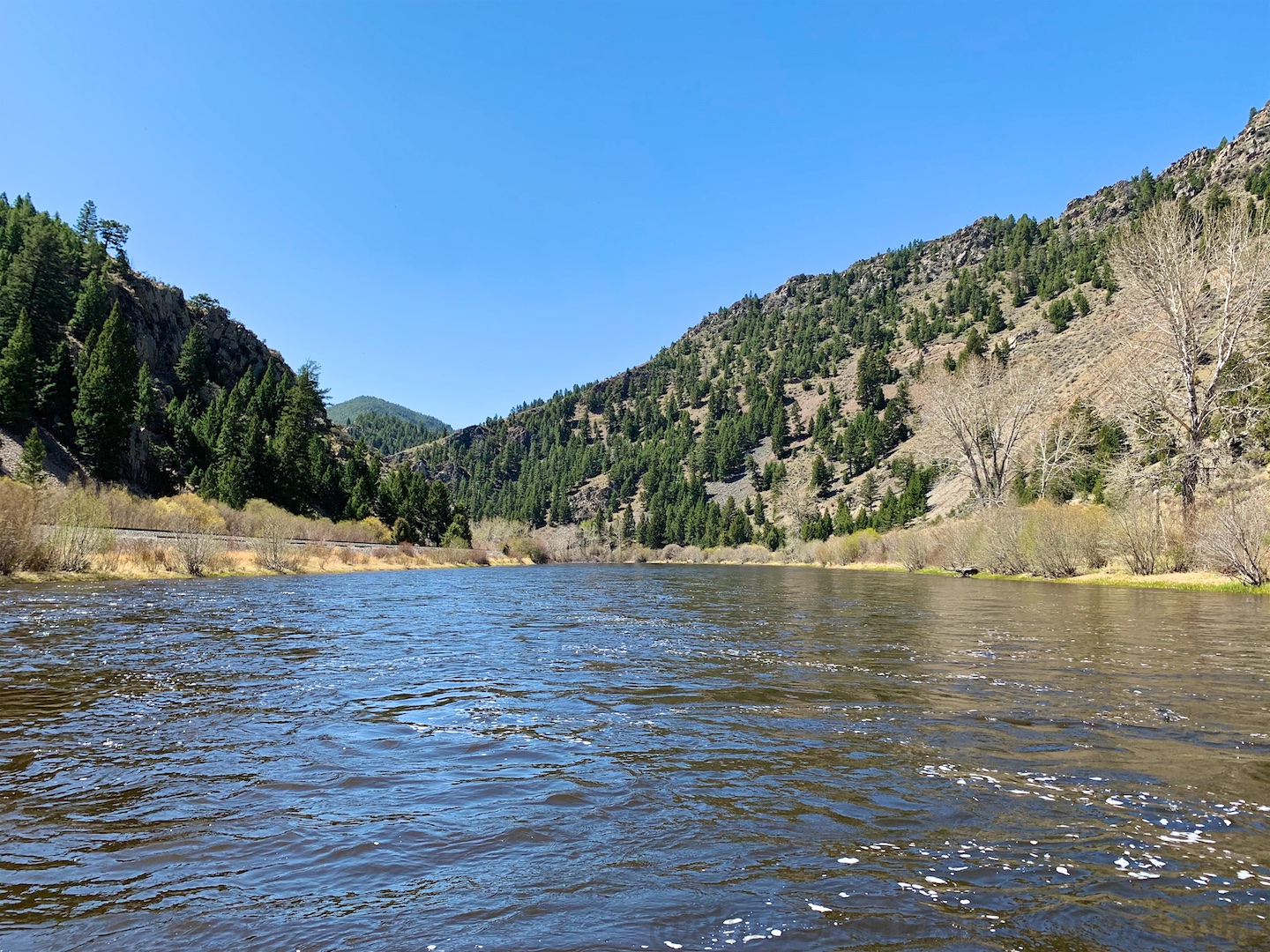
Anaconda, Montana
About 45 miles north of Melrose, where we were staying, is Anaconda. At the beginning of the 20th century Anaconda was a thriving mining town. The mines have been closed for decades and the original mining area has been miraculously transformed into a Jack Nicklaus golf course discreetly peppered with mining relics paying tribute to Anaconda’s past. The mining company’s former pay role office in the center of town is now home for The Smelter City Brewery.
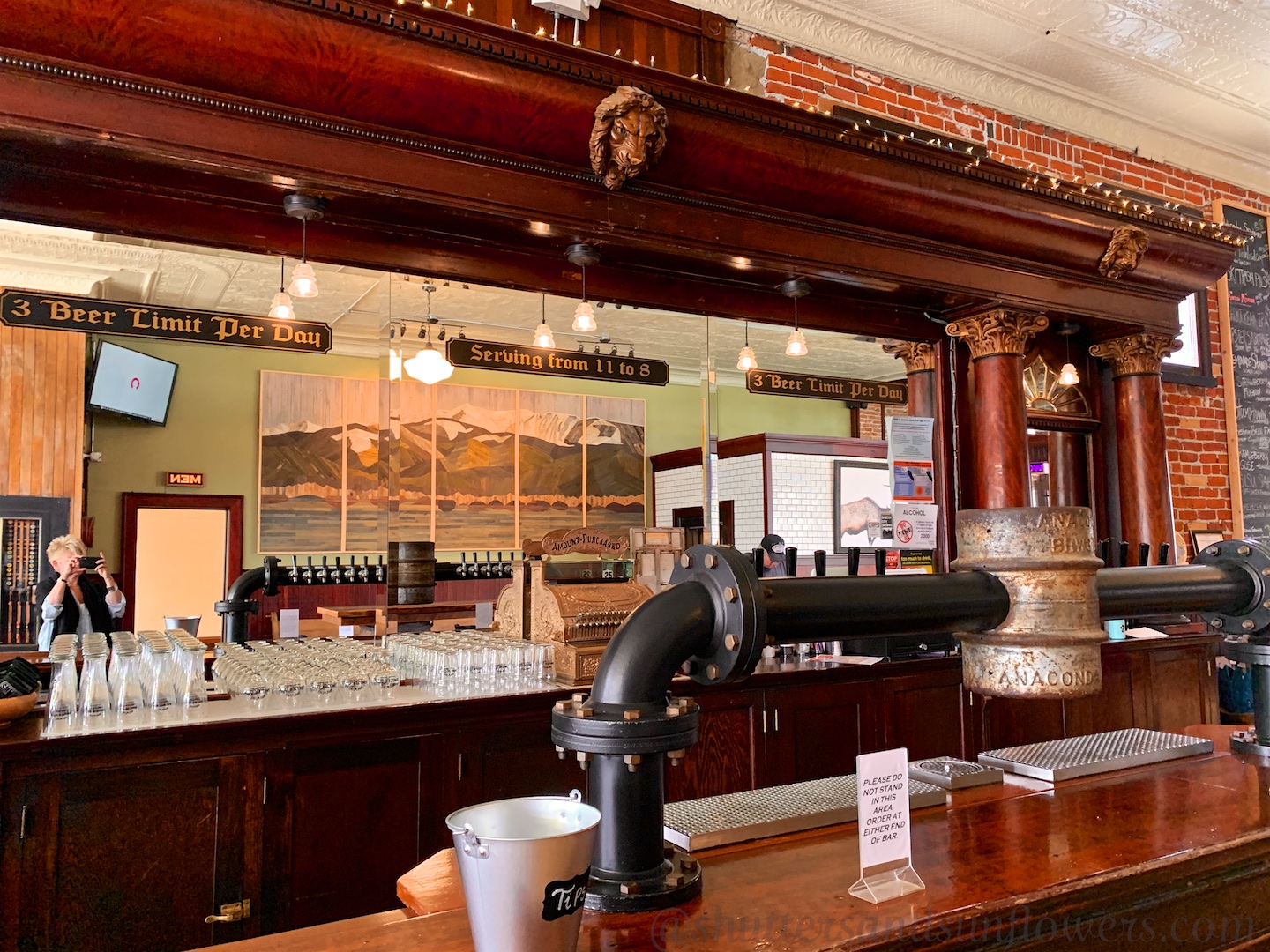
It was great to see such a grand historic building restored to life, with the original 1900’s elevator and early electric fuse box still on the wall. The beer was pretty good too!
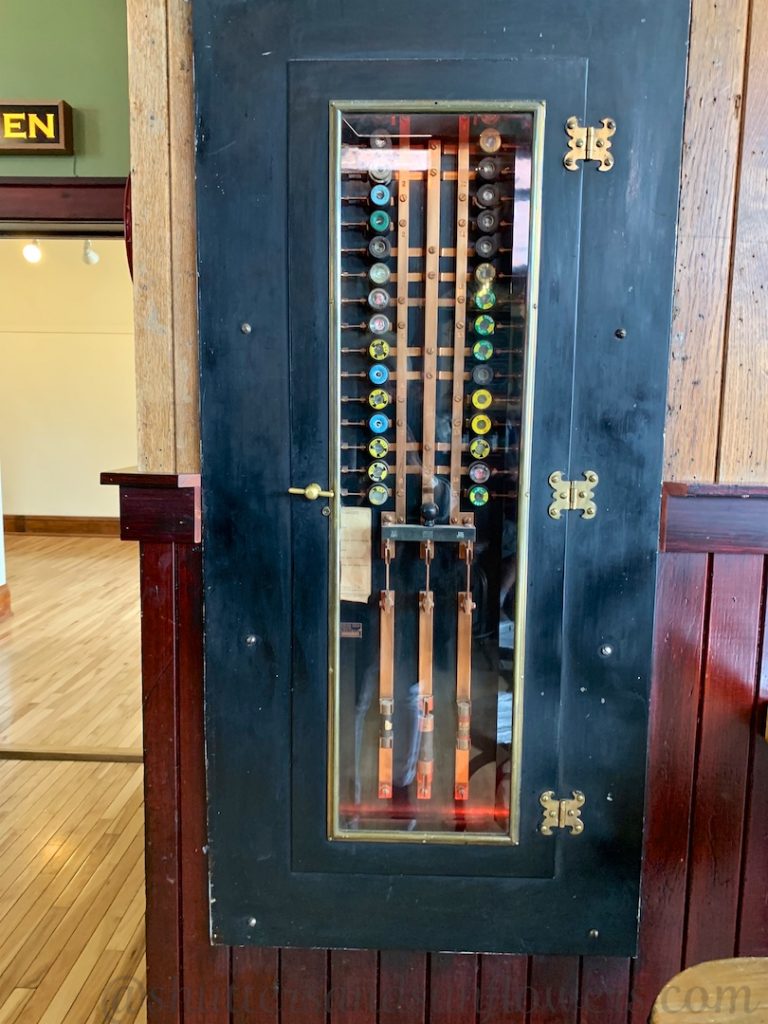
Butte, Montana
North west from Melrose, is Butte. Captivated by a local guide’s enthusiasm and his vast knowledge of a place he was clearly proud to talk about, he took us back to Butte’s former glory years. And the past of this crusty old city was brought to life.
Hennessy’s Department Store
According to our guide there are more historical buildings in Butte than any other city in USA. The building where the tour started was built in 1887. The first three floors of this building, was originally the department store, Hennessy’s, which, we were told, in its day rivaled any Macy’s. Above it the corporate offices of The Copper Company, had been located. At one time this had been the 19th biggest corporation in USA.
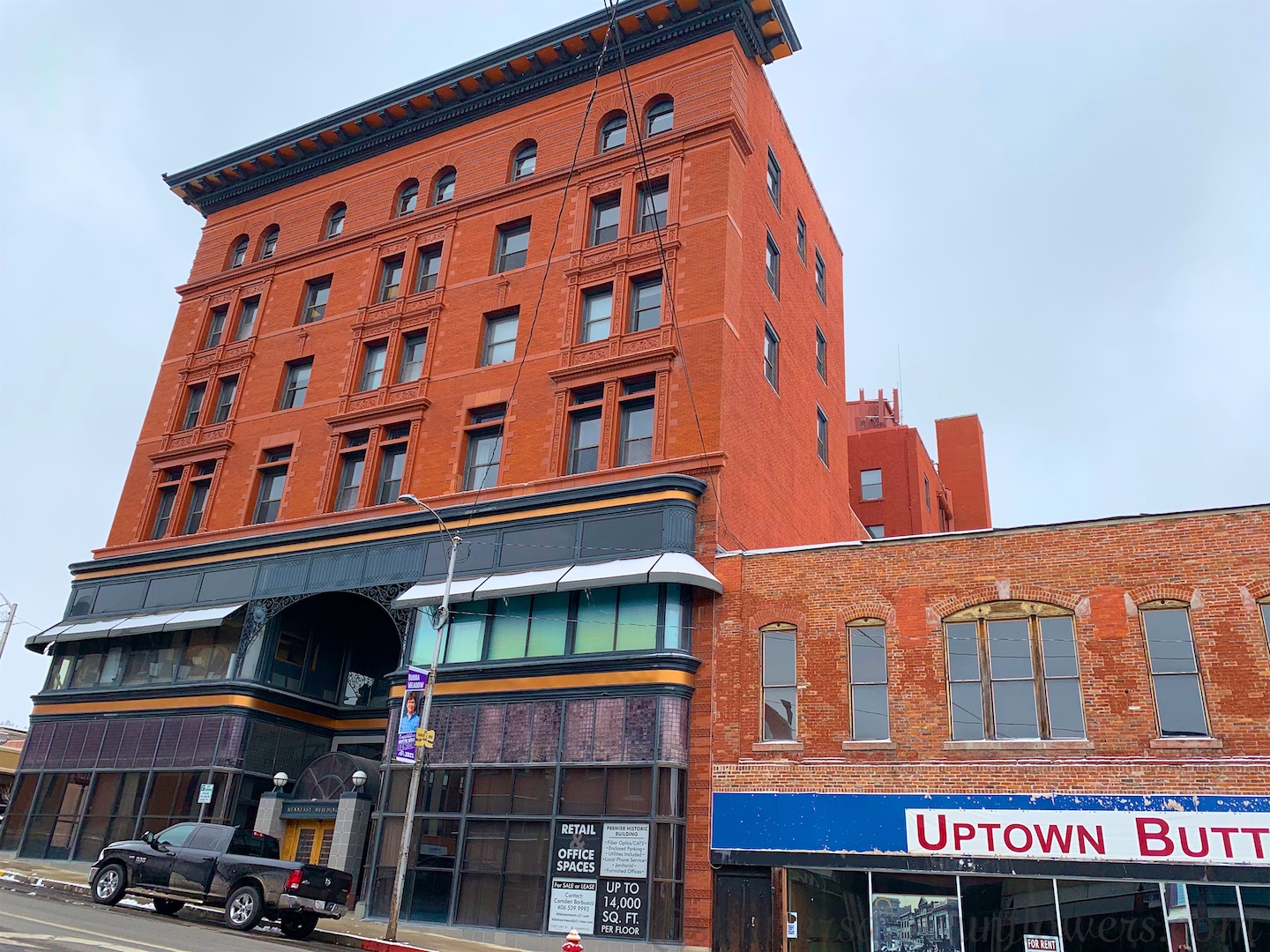
The Hirbour Tower
Built in 1901, the Hirbour Tower has earned it’s place on the historic register as Butte’s first skyscraper.
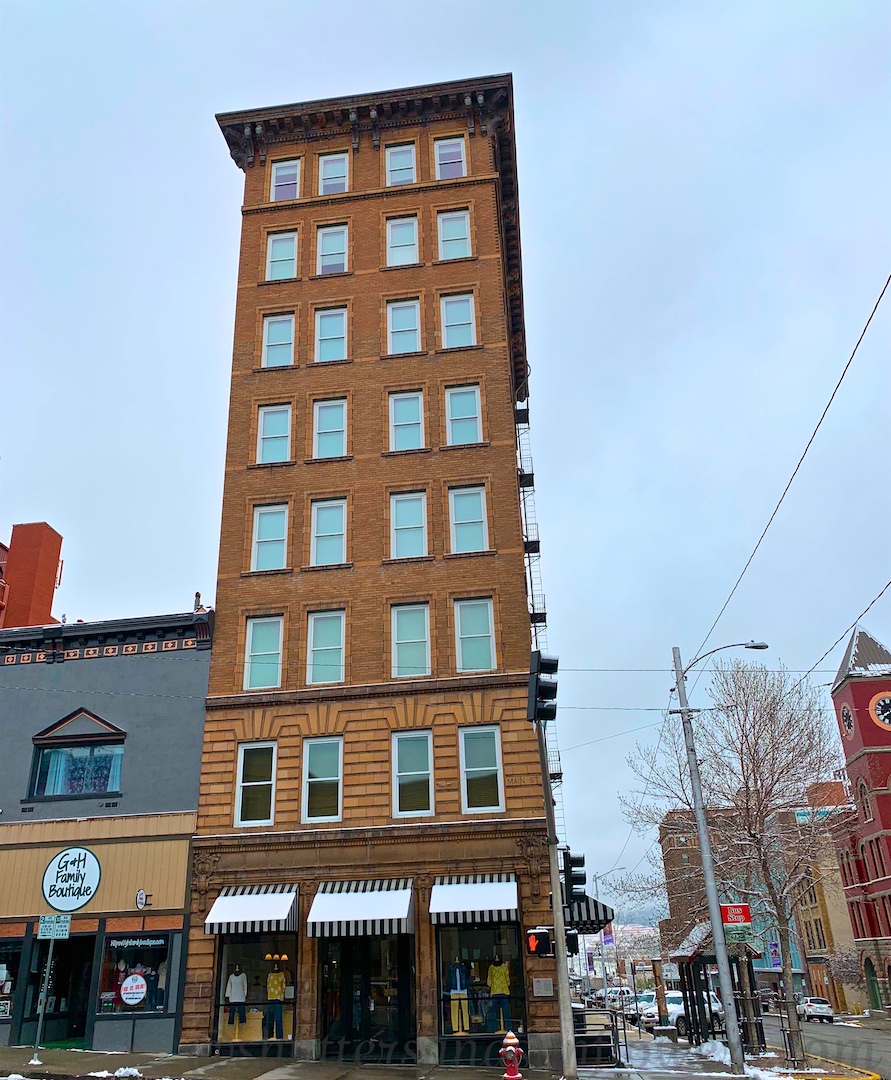
Finlen Hotel
The art deco Finlen Hotel was built in 1924 and is still a hotel today. A grand, 9-story hotel with 250 rooms, it was designed after the Hotel Astor in New York City. Some of its former guests include John F. Kennedy, Thomas Edison, Richard Nixon, and Charles Lindbergh.
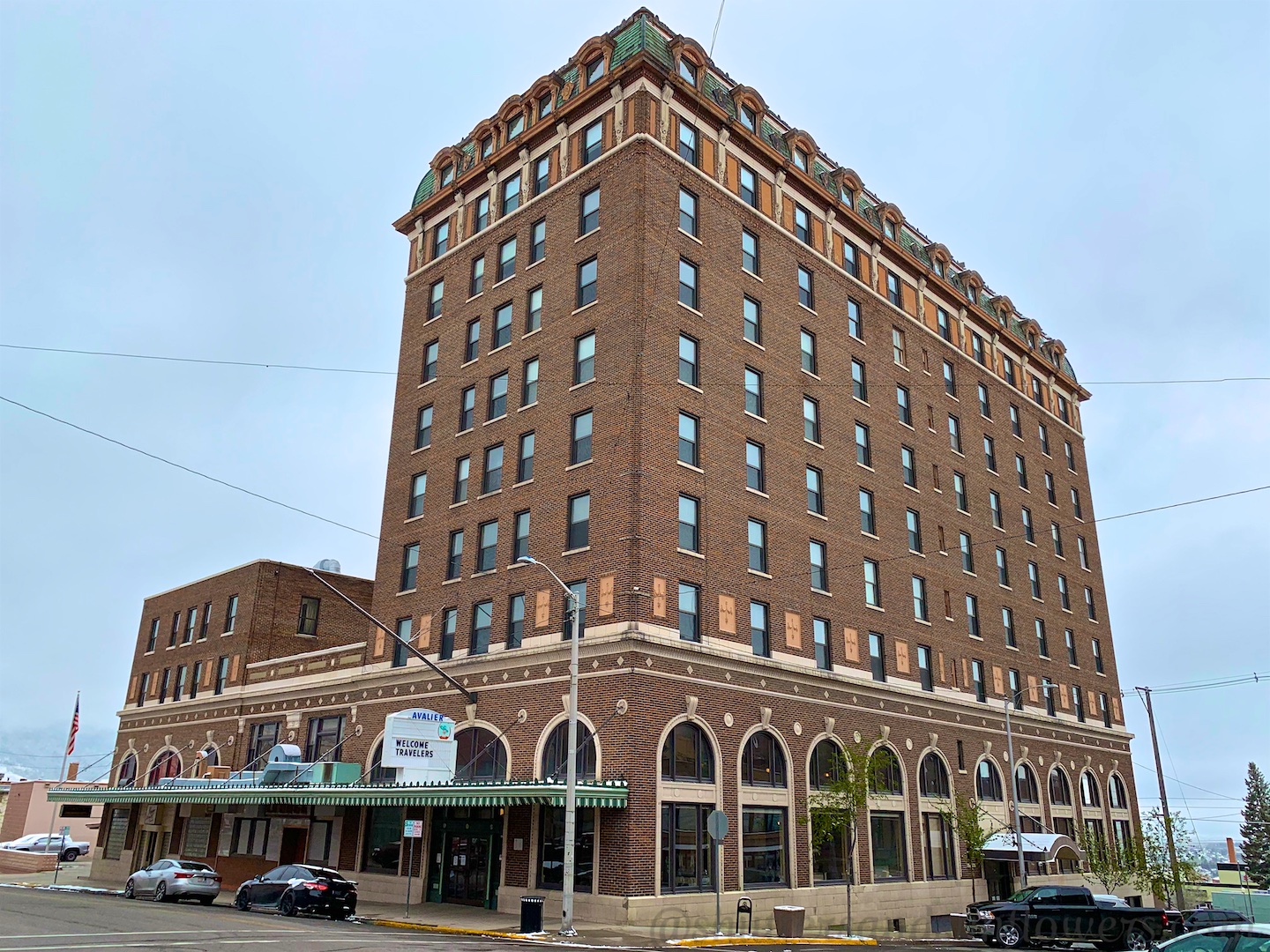
In the early 1900’s Butte was one of the richest cities in the USA and grew to become the largest city between Minneapolis and Seattle. Butte had many famous visitors, Teddy Roosevelt, Mark Twain and Al Capone all came to Butte, in addition to some of the big entertainers of the time. Al Jolson, Bing Crosby and Bob Hope all performed in Butte as did Charlie Chaplin in 1911. Chaplin wrote in his memoirs that he had became worn out in Butte, performing one show every 8 hours to coincide with the miner’s shifts. He also commented that the ladies in Butte were the fairest in the West. At the time Butte had the second largest Red-Light district in the region.
Butte’s basement businesses
As more people came to work in Butte its population exploded. In its prime, the city was so busy that the sidewalks were made two story because space was at such a premium. Many businesses were established underground with glass blocks placed in the sidewalk to bring in the light. Up until 1929 it was possible to travel six blocks below ground visiting these basement businesses.
This former barber’s shop remained operational from 1924 until 1968.
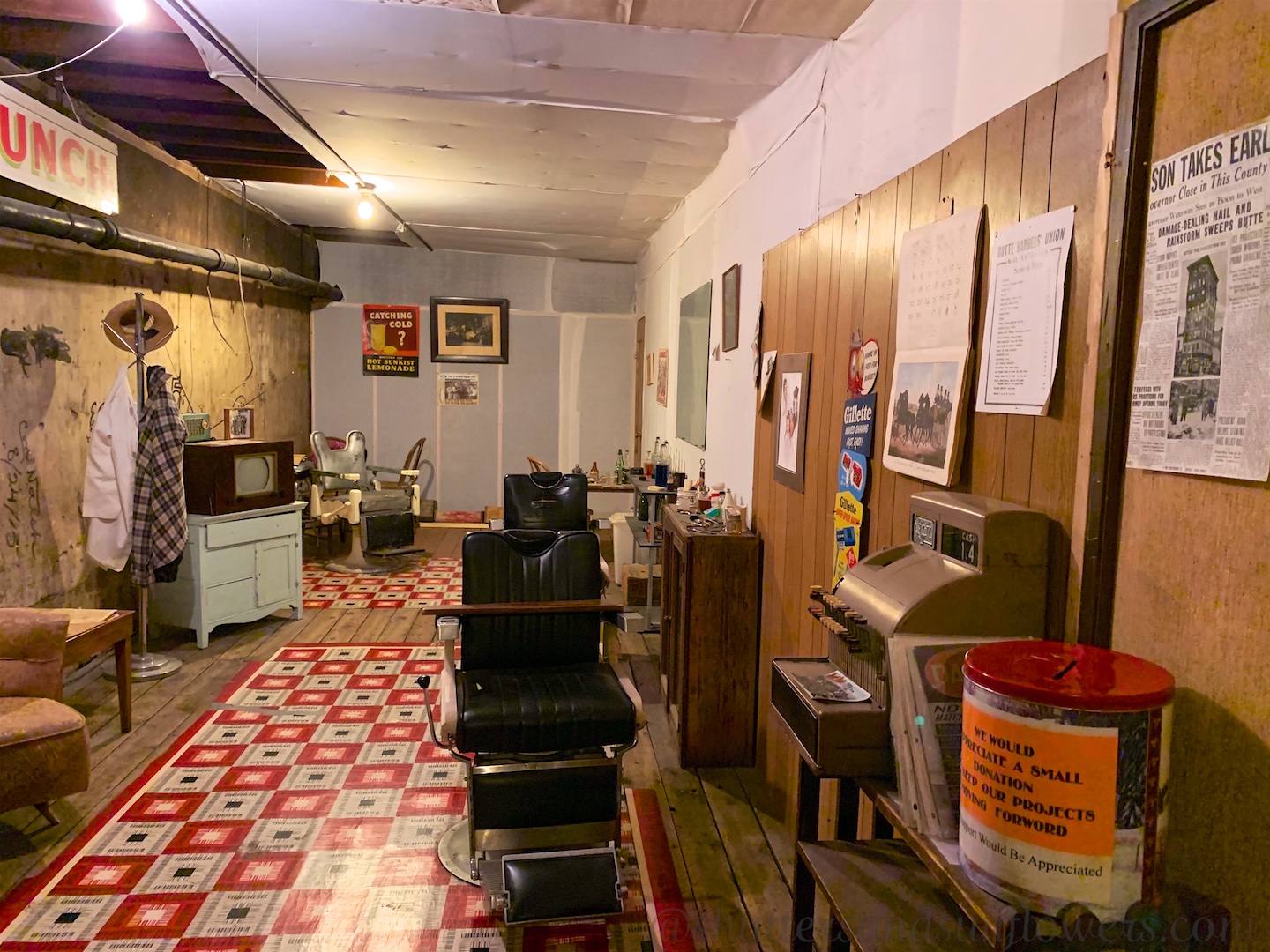
The graffiti found on the walls here tell their own stories. Some of the graffiti was written by a sick child whose family were Norwegian. Based on what he wrote, the boy’s family have been traced back to their arrival in USA at Ellis Island.
Our guide also referenced the visit of two women from Sacramento who, having found a shoe box belonging to their grandfather, containing memorabilia from Butte, came to trace their grandfather’s origins. We were told that it was an emotional moment when their search led them to this basement and graffiti written in shoe polish by their grandfather.
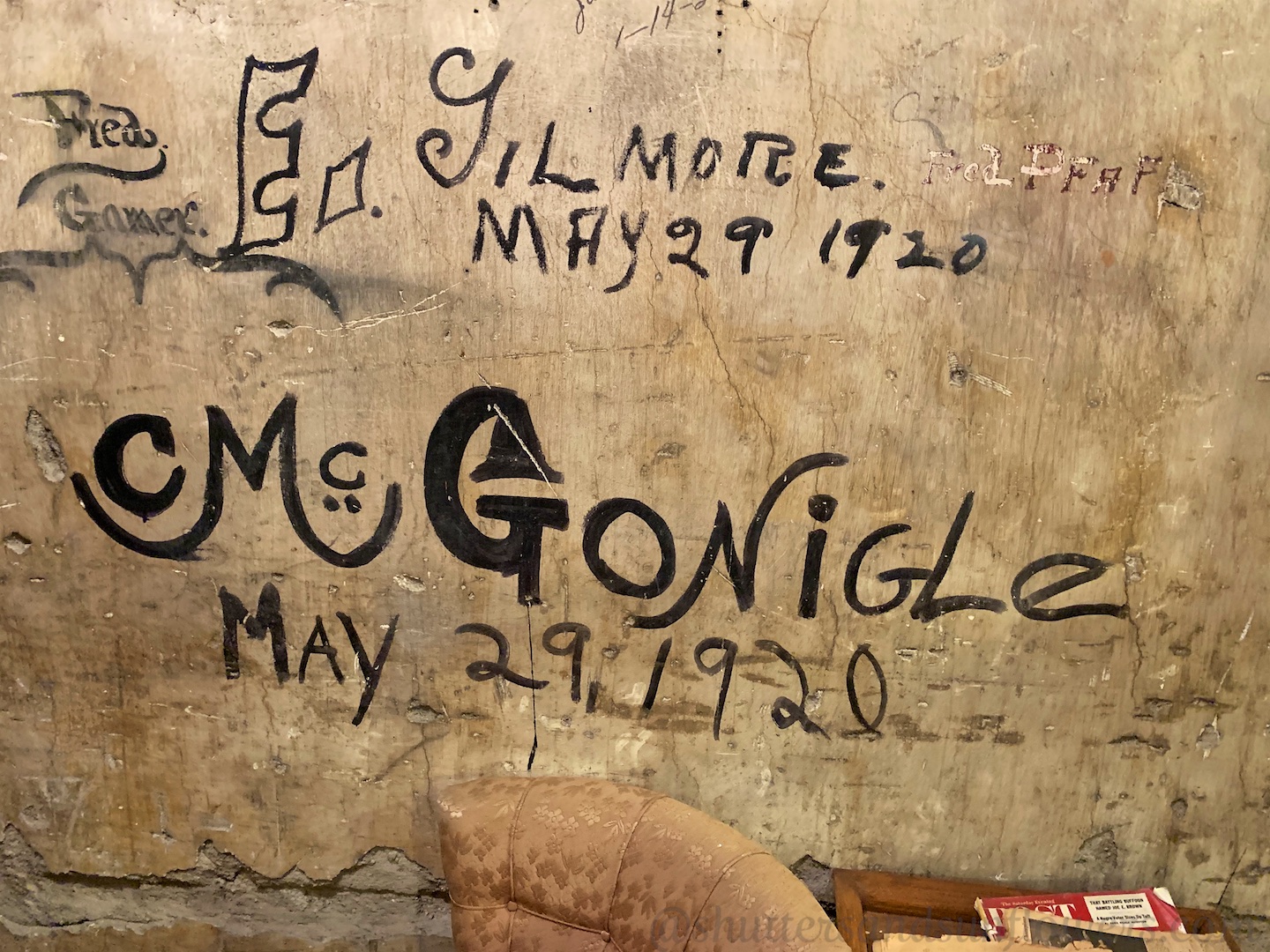
Butte and Prohibition
As Butte grew, it ended up with 212 bars and was entered into the Guinness Book of Records twice. Once because its bar on Broadway was the longest in the world, a city block long requiring seventeen bar tenders to run it. And secondly, because it had the country’s smallest bar seating, only eight. Butte also has the oldest Chinese restaurant in USA, still operating from its original premise. It has just celebrated 100 years in business.
Carrie A. Nation, the woman most closely associated with the temperance movement, visited Butte in 1910 to try and quell, what she considered, a rampant propensity for alcohol. Carrie was known as “Mother Nation” for her work helping unfortunate women and children. Having suffered the alcoholism of two husbands she had established a chapter of the Woman’s Christian Temperance Union (WCTU) helping to pass a Kansas law against selling alcohol. She came to Butte determined to do the same.
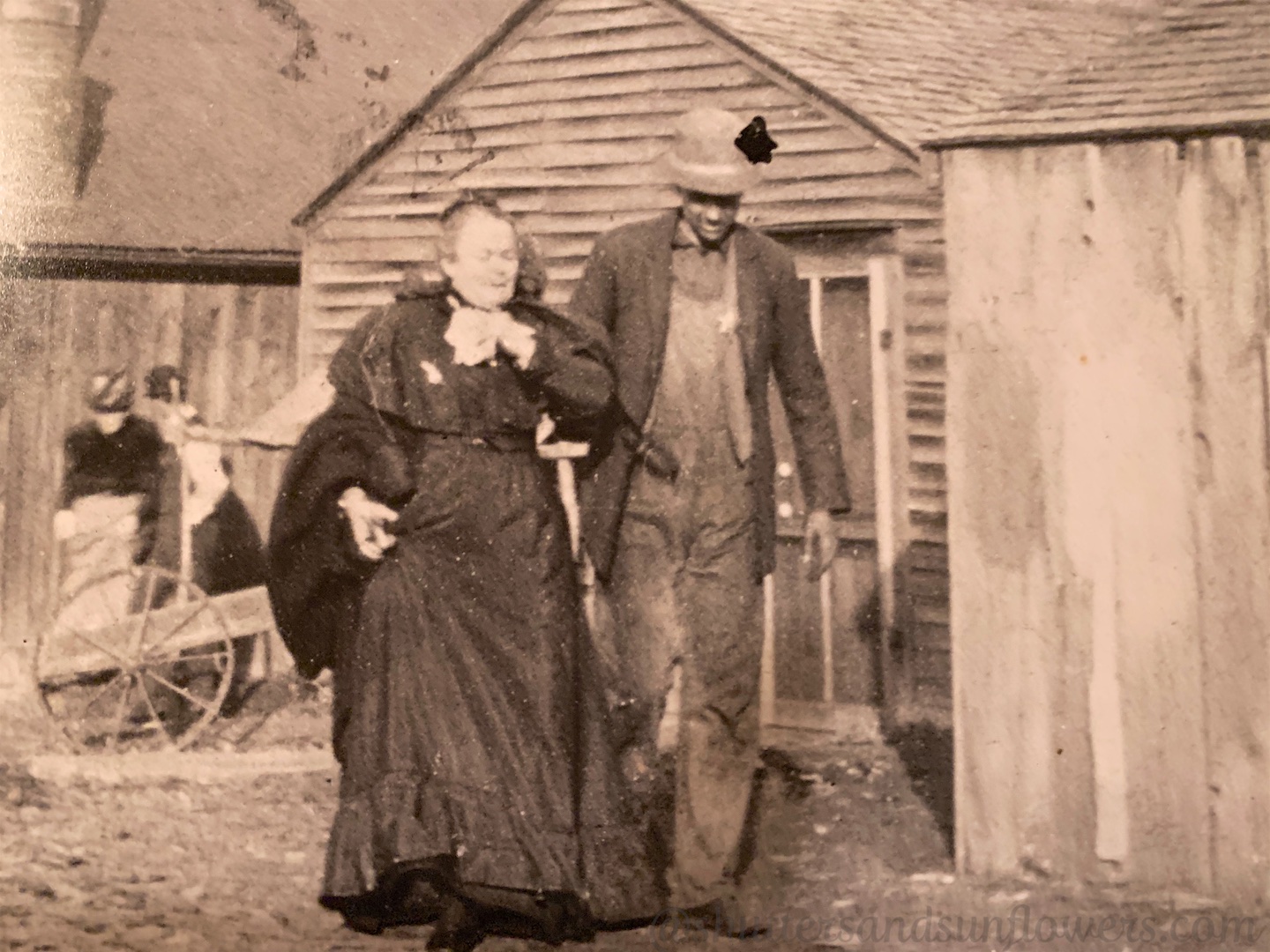
Not surprisingly Carrie was not welcomed by the locals! It is not certain how much influence she had, although in 1919, Prohibition started in Butte, nine months earlier than elsewhere in the country. The Federal Government, however, continued to make money from alcohol due to a clever loop hole which permitted its use for medicinal purposes, with a prescription of course. In recent years evidence of alcohol consumption during Prohibition has been found when several hidden crates of 100% proof Kentucky whiskey were unearthed in Butte. In Anaconda, the remodel of a grocery store uncovered a false wall behind which thirty cases of bottles labelled as floor wax were revealed. Small enough to be concealed in a pocket, it is thought their intended use was for whiskey. Hundreds of whiskey stills have also been discovered throughout the region.
The Rookwood Speakeasy
Prohibition lasted from 1919 into the mid 1930’s. Throughout this entire time, illicit drinking venues known as speakeasies flourished, it’s believed there were over one hundred and fifty in Butte. In 2004, a speakeasy was discovered in Butte’s Rookwood Hotel, a hotel which had been abandoned since 1986. Built in 1912, the hotel had a lavish interior with Terrazzo tiles from Florence, Italy. It’s lobby was situated in the basement to shield it from the noise of the busy streets above. The Rookwood Speakeasy was found hidden off this lobby behind 6.5 inch thick walls and a 4.5 inch thick door.
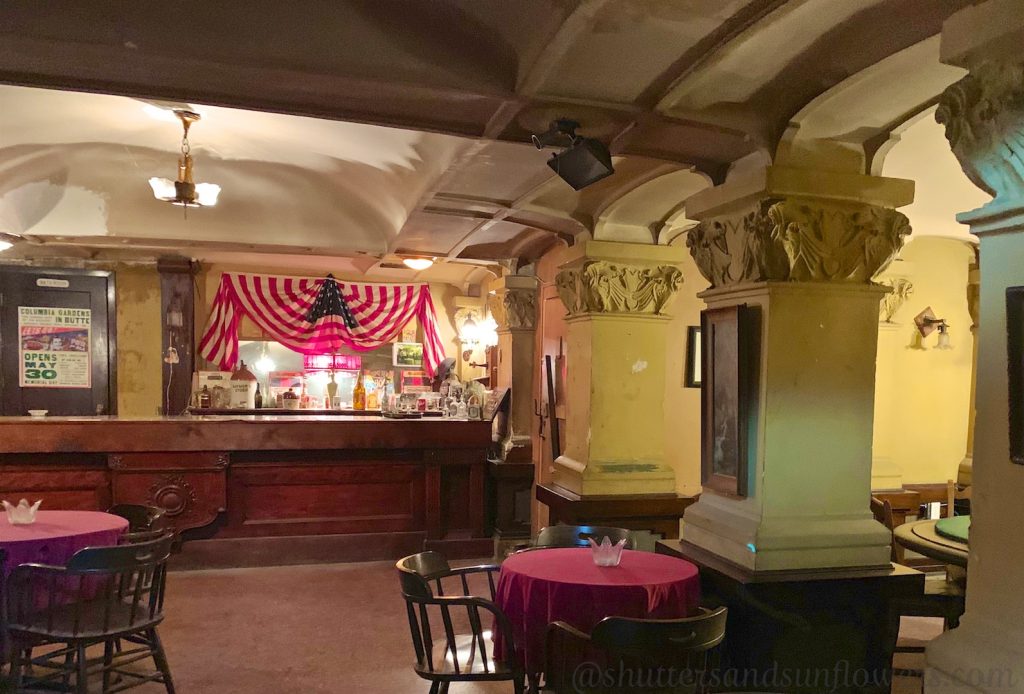
Before entering the Speakeasy, people were told to look into the lobby mirror, which was two way, allowing those inside to see who was trying to gain admittance. Anyone entering was told to whisper, or speak easy the secret code they’d just been given; hence the term ‘speakeasy’.
Despite having been abandoned for decades the Rookwood Speakeasy was remarkably intact containing many artifacts from its era of operation.
This hat, left hanging on the wall, had been worn in the late 1920’s, determined from its pin supporting Herbert Hoover’s 1928 campaign for the Presidency.
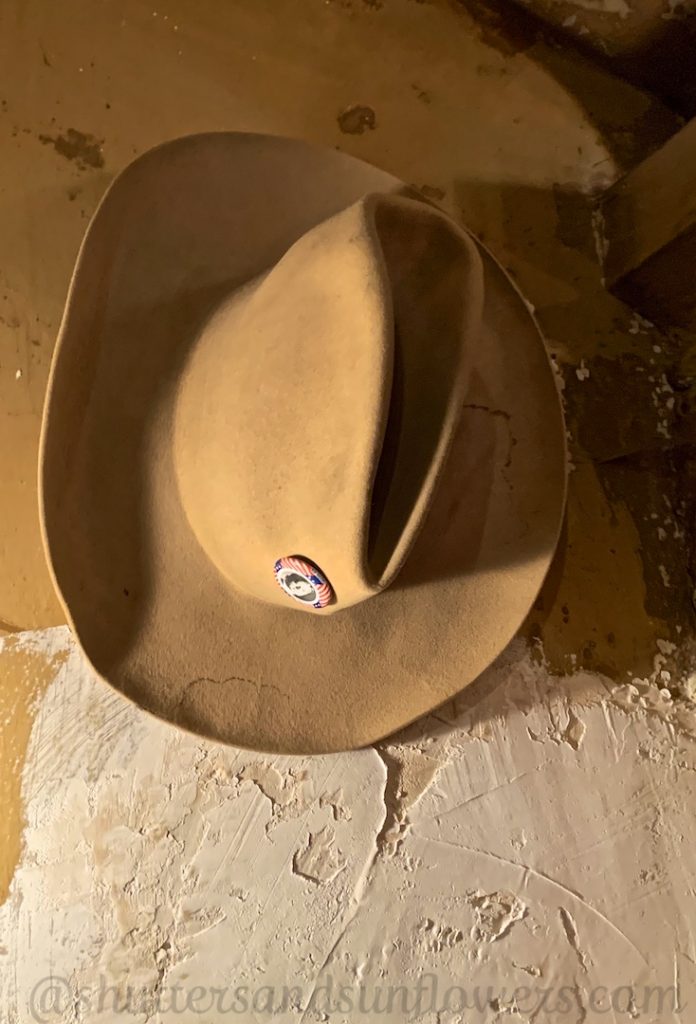
It’s owner is believed to be in this photograph found on the wall next to it.
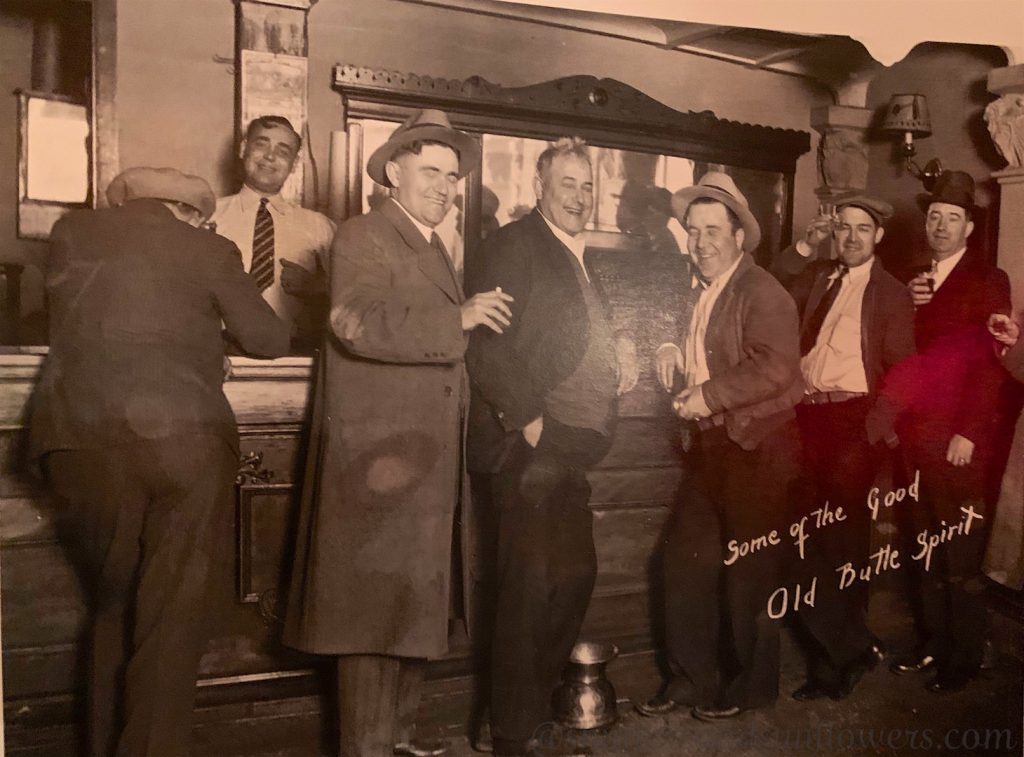
The bathroom behind the bar had an original Crapper Toilet from England. Unlike standard versions of these toilets its wooden cistern had been faced with copper, Butte’s local precious treasure.
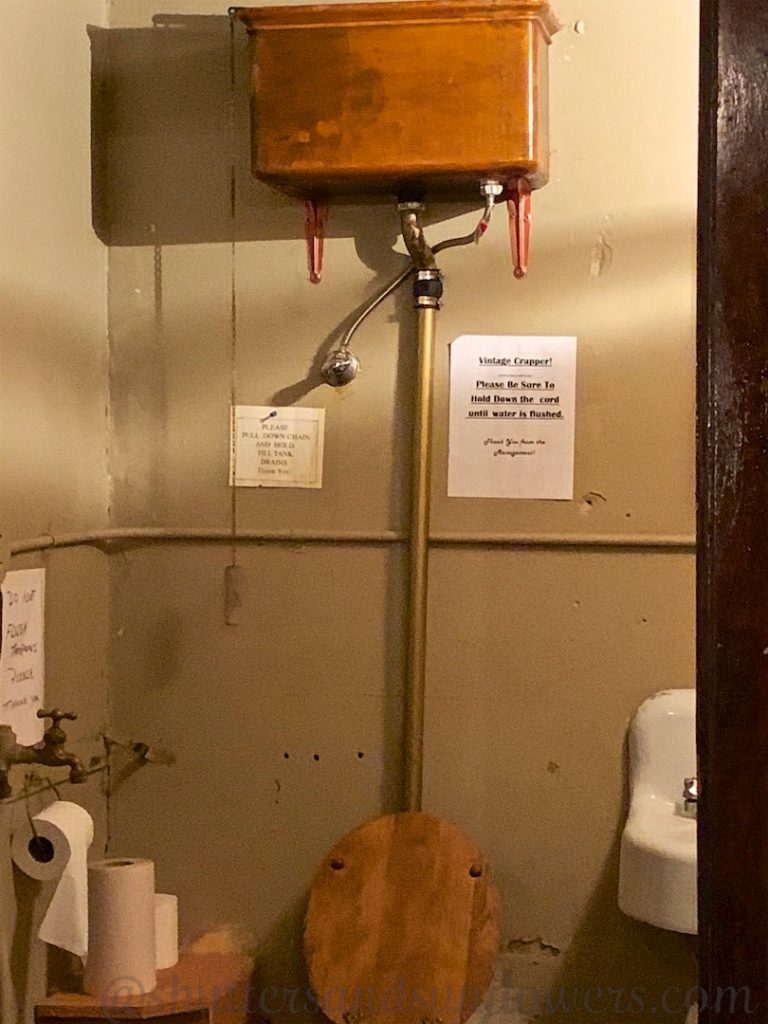
As an aside note the tour guide told us an entertaining bathroom story related to early British settlers coming to America in the 1500’s. Concerned about the quality of the soil they’d find in the new world, they often transported manure with them. Fearful that the methane produced from the manure might blow up the ship, an order was given to Ship High in Transit. Although amusing, my research suggests this story is as full of the proverbial as the acronym itself!
The Butte Bastille
Our last stop on the tour was at Butte’s former civic buildings.
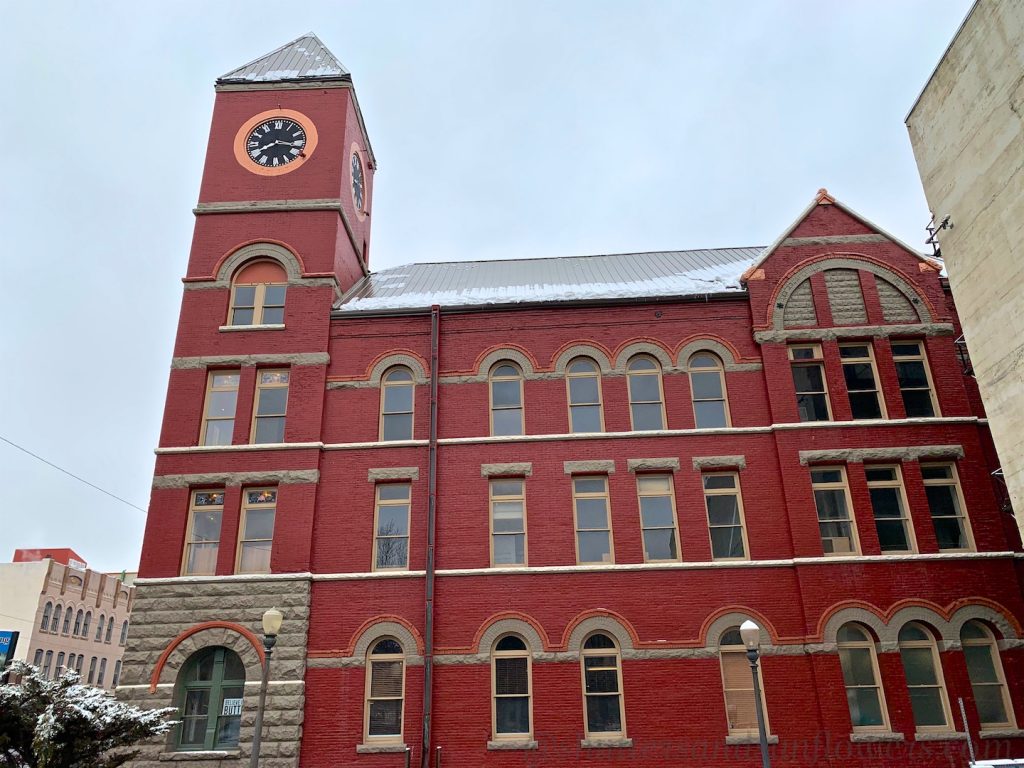
Home to the Mayor’s office, it was also the police station and the city jail, known as “Butte Bastille”.
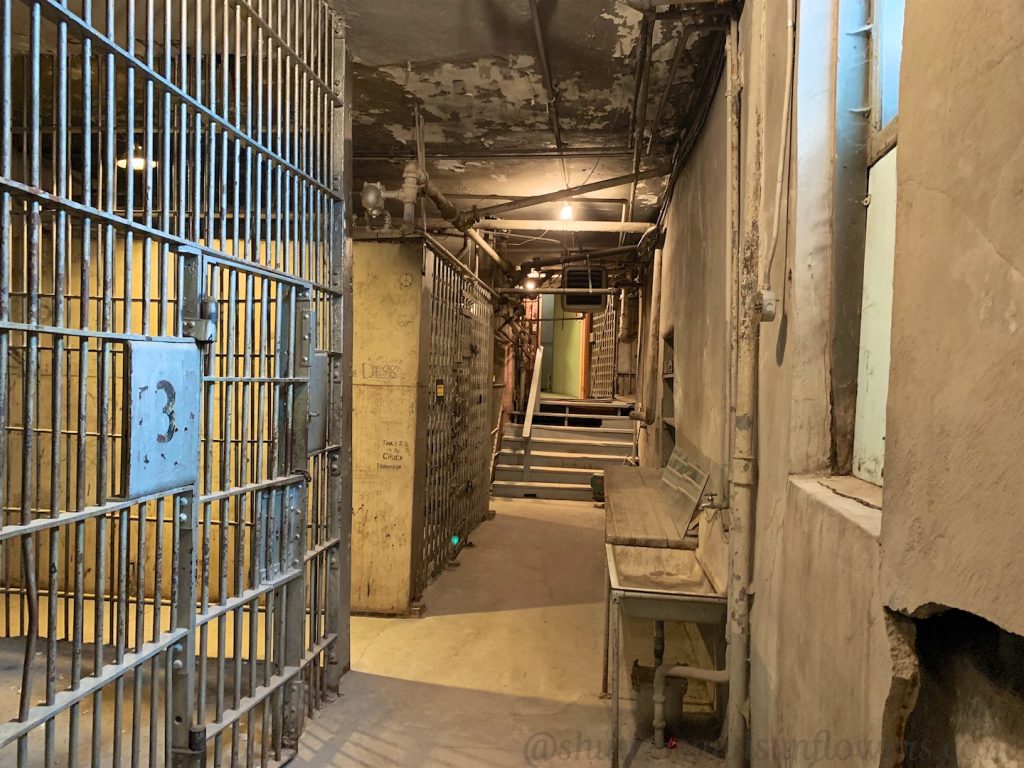
Built in the basement in 1890 it was a grim place. The steam pipes running in the ceilings ensured a sweltering and uncomfortable temperature of about 105 degrees F. The jail remained operational until 1971 when the Federal government finally closed it down condemning it as a dungeon.
One if its most famous inmates was the daring stunt driver Robert ‘Evel’ Knievel, a local Butte celebrity.
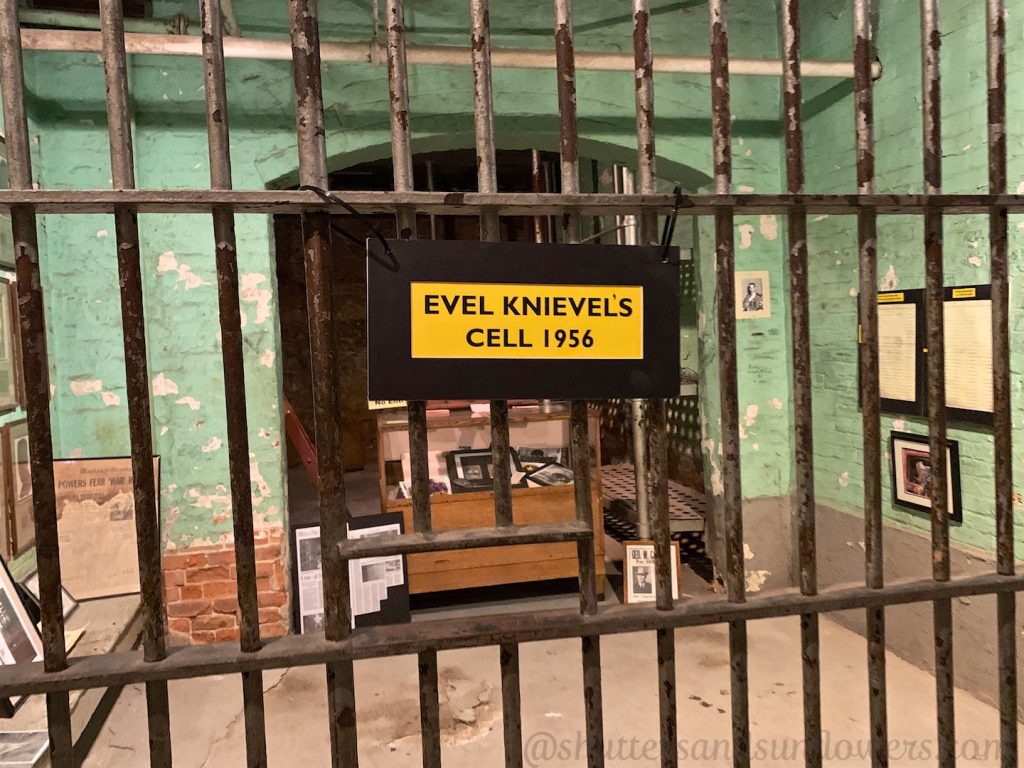
This cell was named after him because of the time he spent here for dangerous driving. According to our guide Doc Holiday also spent time here and Wyatt Earp’s brother was a police officer here.
An unimaginably cruel and miserable place, we left the jail in need of some consolation. We found some in Metals Bar, formerly The Metals Bank, warming our souls in what had previously been the bank’s vault!
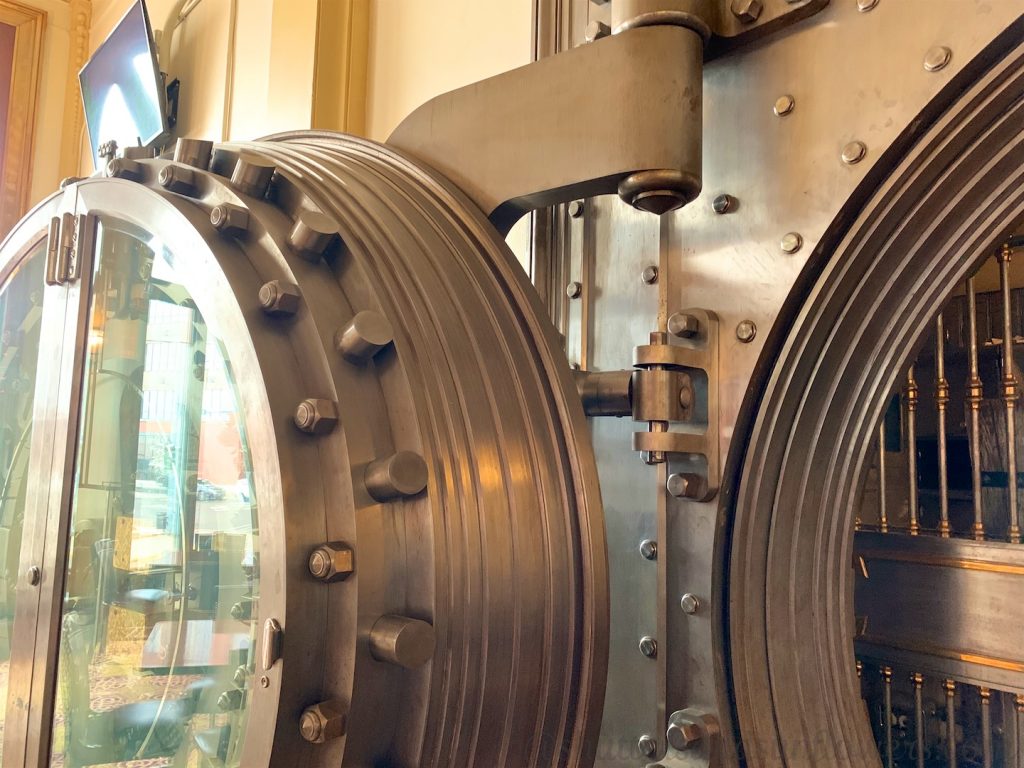
Another place one did not to be locked inside!
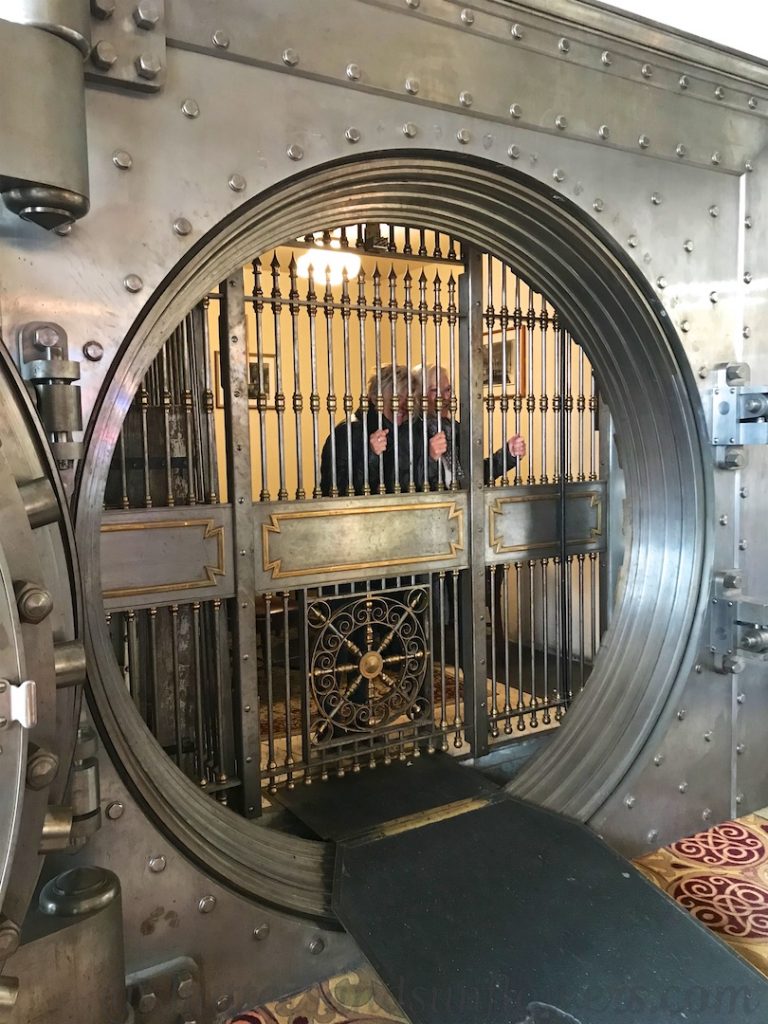
BUTTE’S MINING LEGACY
It would be a mistake to leave Butte without learning more about its mining legacy upon which its former prosperity and wealth had been founded.
Gold was mined first in Butte followed by silver. Then, in the 1880’s copper was found. This was just a year after Edison had invented his light bulb, which requiring a copper filament, had made the international demand for copper soar. Miners arrived from all over the world to work in Butte’s copper mines and the population of the city exploded. At one point there were 100,000 people living in Butte, 52,000 of which were miners from thirty two countries speaking seventeen different languages, the majority being Irish, Welsh and Cornish miners. Between 1905-1917 Butte produced one third of the world’s copper. As the guide on the underground mining tour remarked, “Gold had drawn people, silver encouraged them but copper made them rich!”
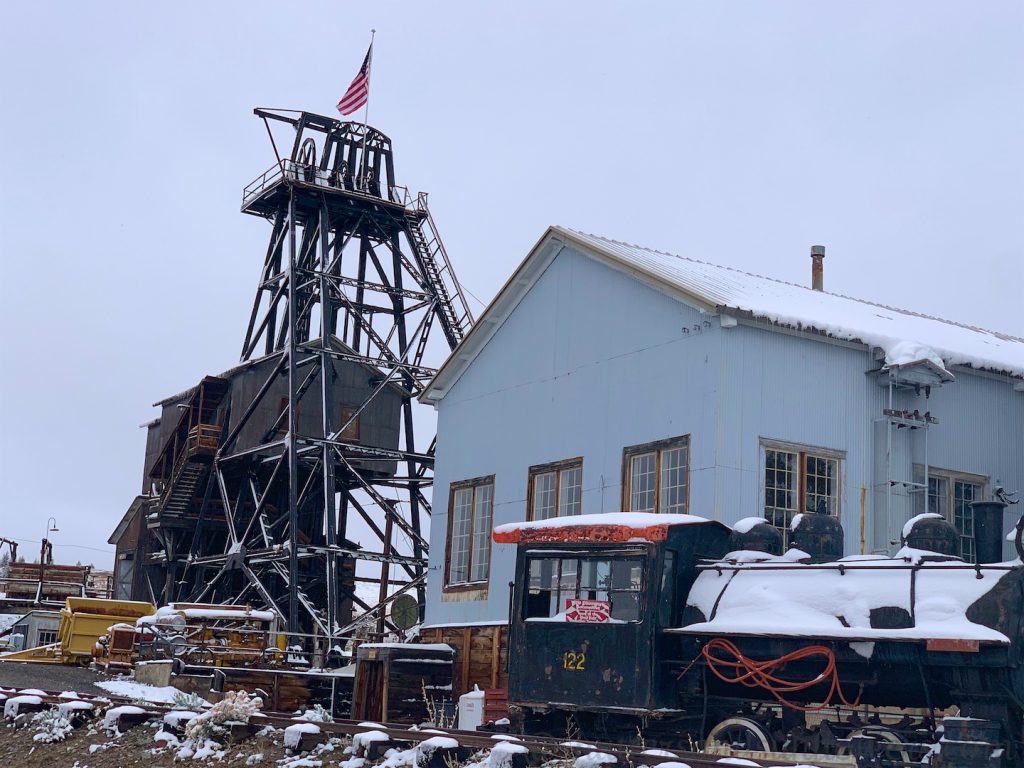
Butte’s Underground Mining Tour
The tour took place at the Orphan Girl Mine, so called because it was located further away from the other mines. Originally the copper from Butte’s mines was taken by ship to be smelted in Wales in the UK. The men who owned these mines became millionaires and known locally as the ‘Copper Kings’. Marcus Dailey was the first Copper King and William Clark the second.
The William Clark Mansion
Clark came to Butte in 1872 building Butte’s first smelter. In 1884 he began construction of this three floor, thirty room mansion. It took four years to build at a cost of $260,00. The lavish interior is richly decorated in hardwoods and its nine fireplaces are adorned with imported tiles capped by hand carved mantles to match the room’s decor.
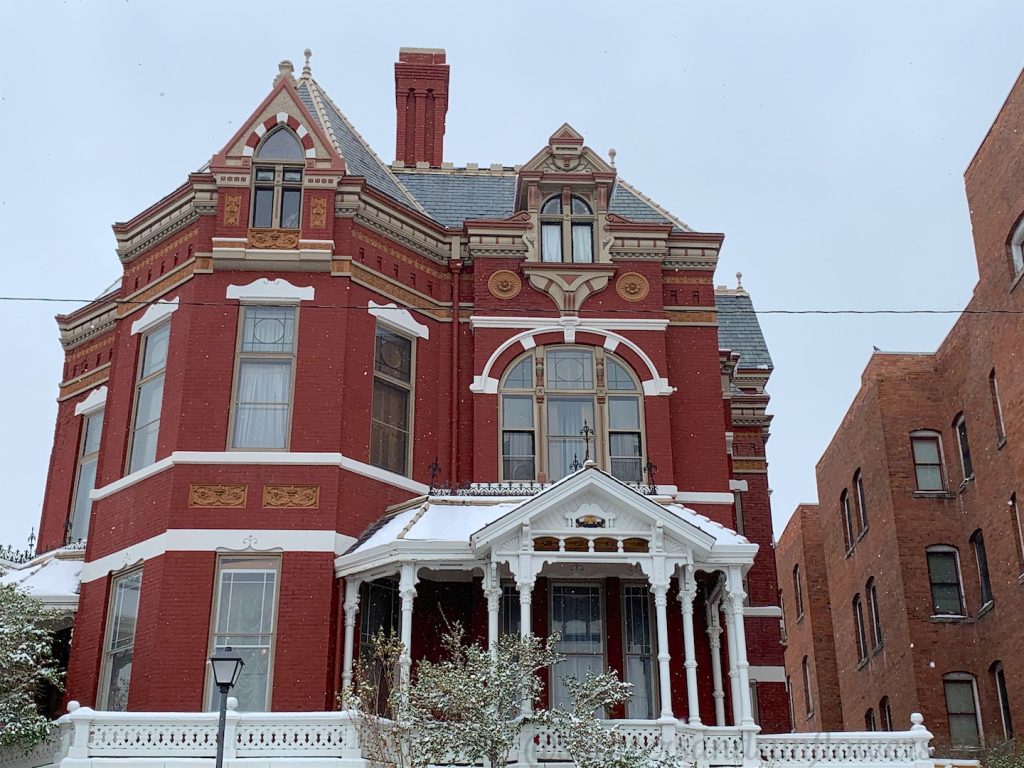
William Clark went on to found Las Vegas and at one point was the richest man in world, a position he lost in 1900 when J.P. Morgan, the owner of The Anaconda Mining Company, won it from him. The two men became great rivals. On his death bed Clark made his children promise they would not sell out to Morgan, three weeks after he died they did just that.
The reconstruction of the town recreates 1890’s Butte with nearly thirty five historical structures and buildings.
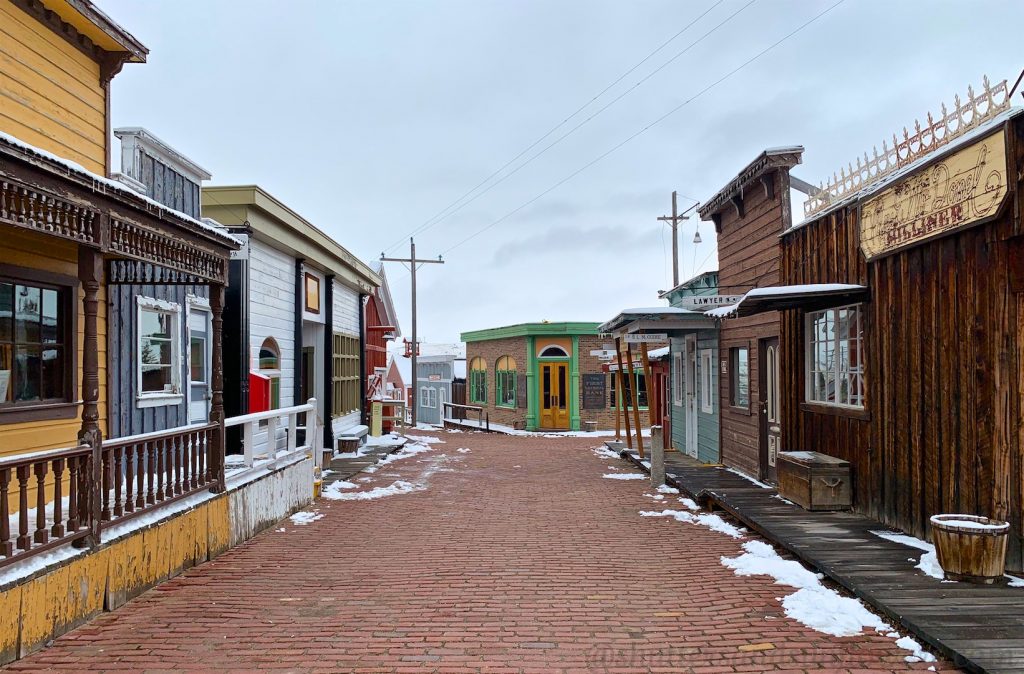
The Miner’s Dry
This is where the miners changed out of their wet clothes, washing out the grease & dirt with borax soap after their shift. Some of the ground water was so acidic that after just a few shifts it had destroyed the miner’s clothes.
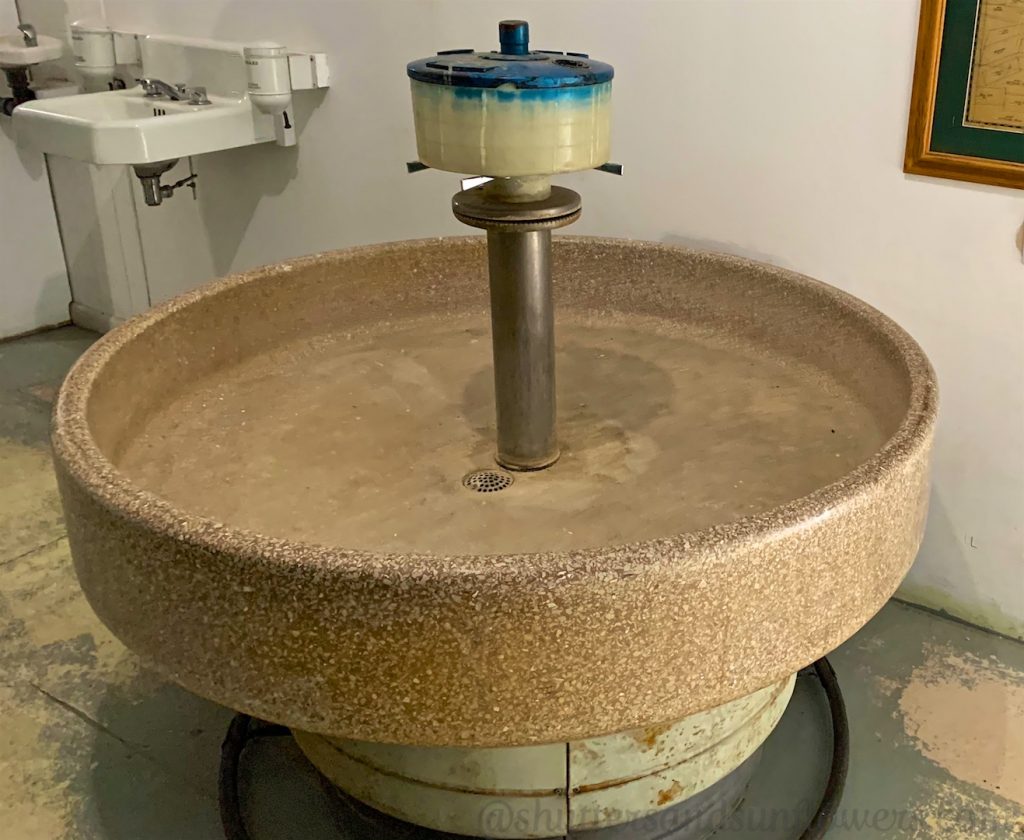
Before the miner’s dry was available the men often walked the several miles home in wet clothes. During the harsh Butte winters when the temperatures could be as low as 50 degrees below zero the men often caught pneumonia and died. The miners dry allowed the men to dry off and change into clean clothes to try to prevent this happening.
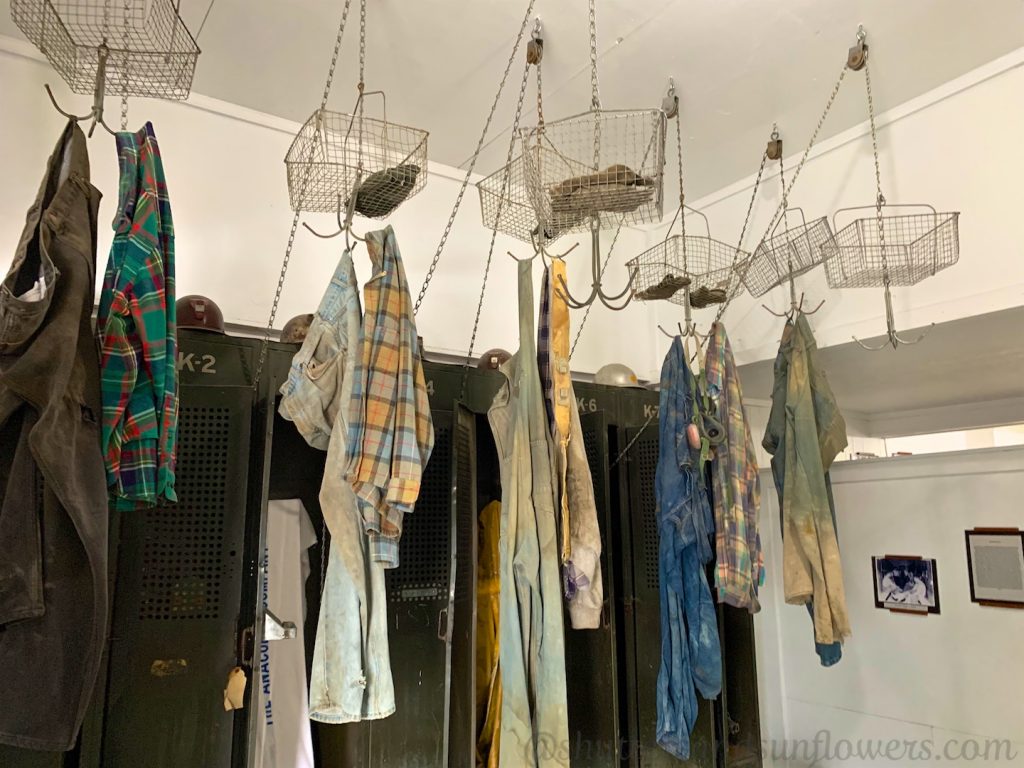
The mine operated seven days a week there were five hundred shafts. A fascinating collection of artifacts, tools and machinery were on display.
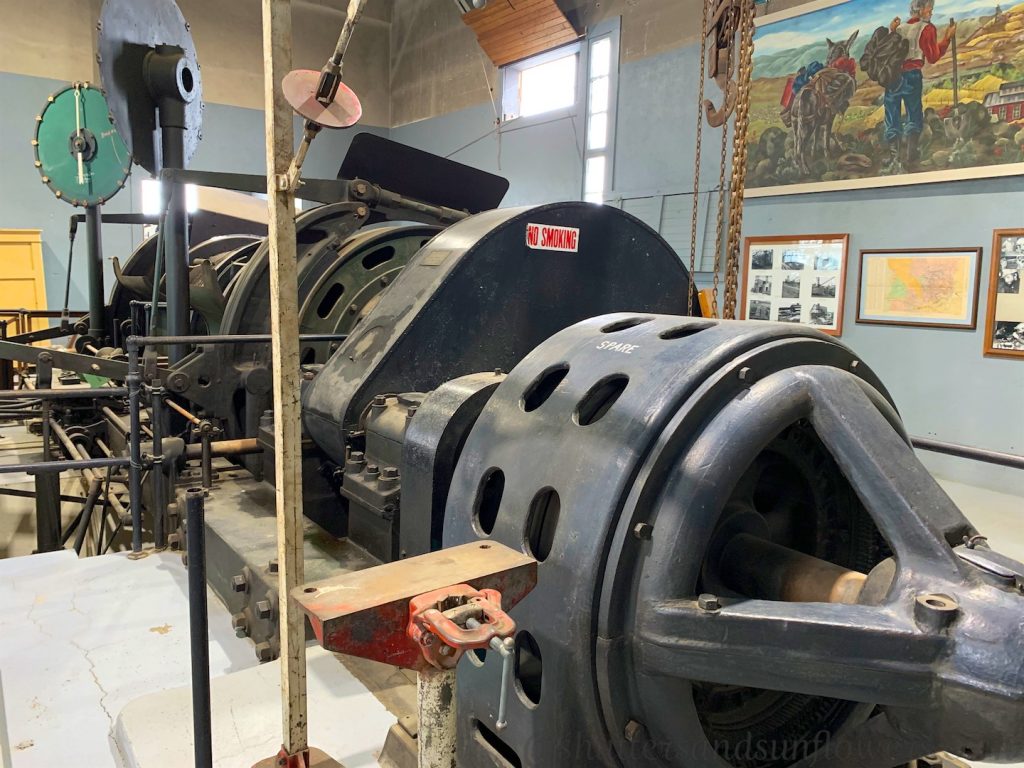
We were told copper was known as peacock ore because before it was fired it was a bright green and blue color. It was a felon and instant dismissal to converse with the mine shaft engineer, the only mine employee to have received any formal training. Once inside the mine it was easy to understand the importance of his role. It was vital that he was never distracted, the lives of all that descended these perilous mines shafts were dependent on this engineer’s constant vigilance.
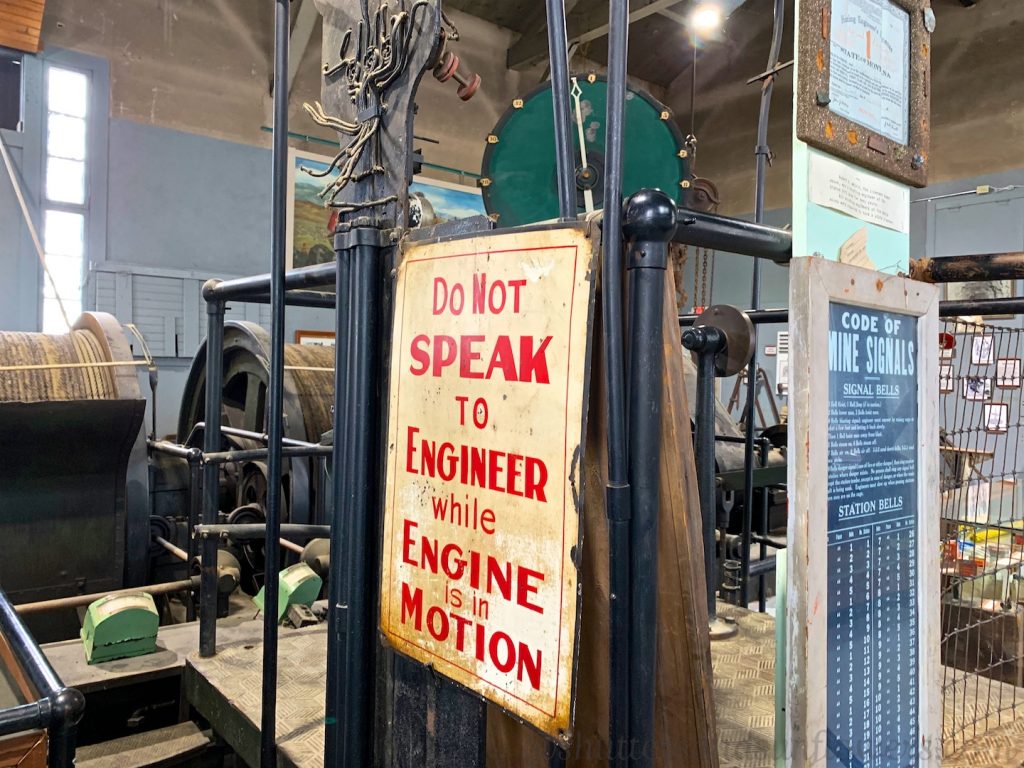
Outside the museum it had somehow become mid-winter, it was perishing cold and we were grateful to escape the snow and bitter temperatures, somewhat bizarrely, by entering a mine. Miners’ helmets with lights were produced for us to wear and we followed our guide by foot down into the mine.
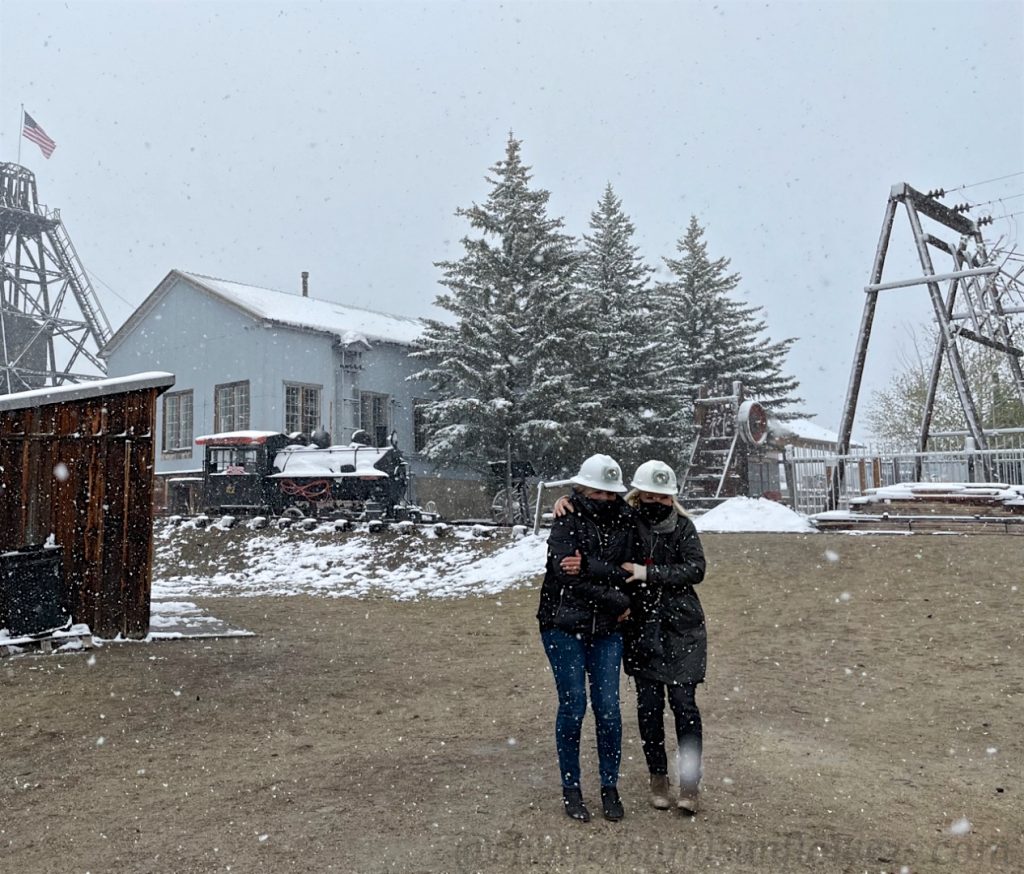
Without our lamps it was pitch black. Up until 1910 the miners only had candle light to guide them. A highly unreliable source of light and it was very dangerous. If miners became trapped in the mine, with no light they would become permanently blind within a few days.
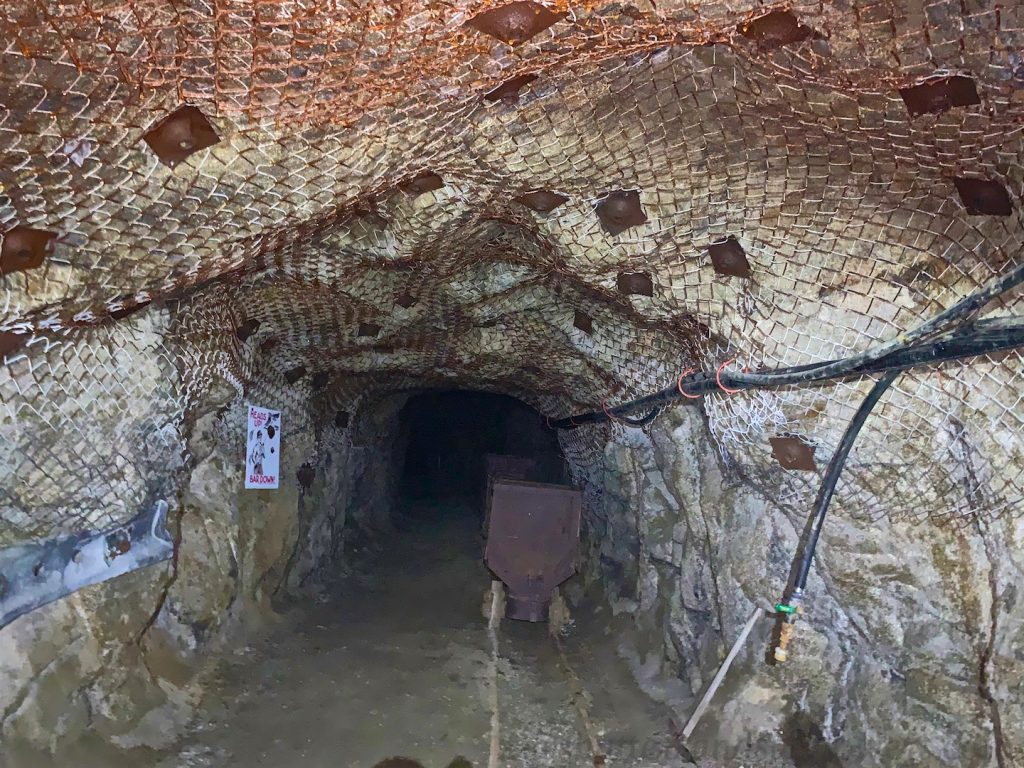
We walked a fair distance into the mine passing several piece of original mining equipment.

A mine shaft elevator.
The miners communicated with the shaft engineer by ringing the bell a set number of times.
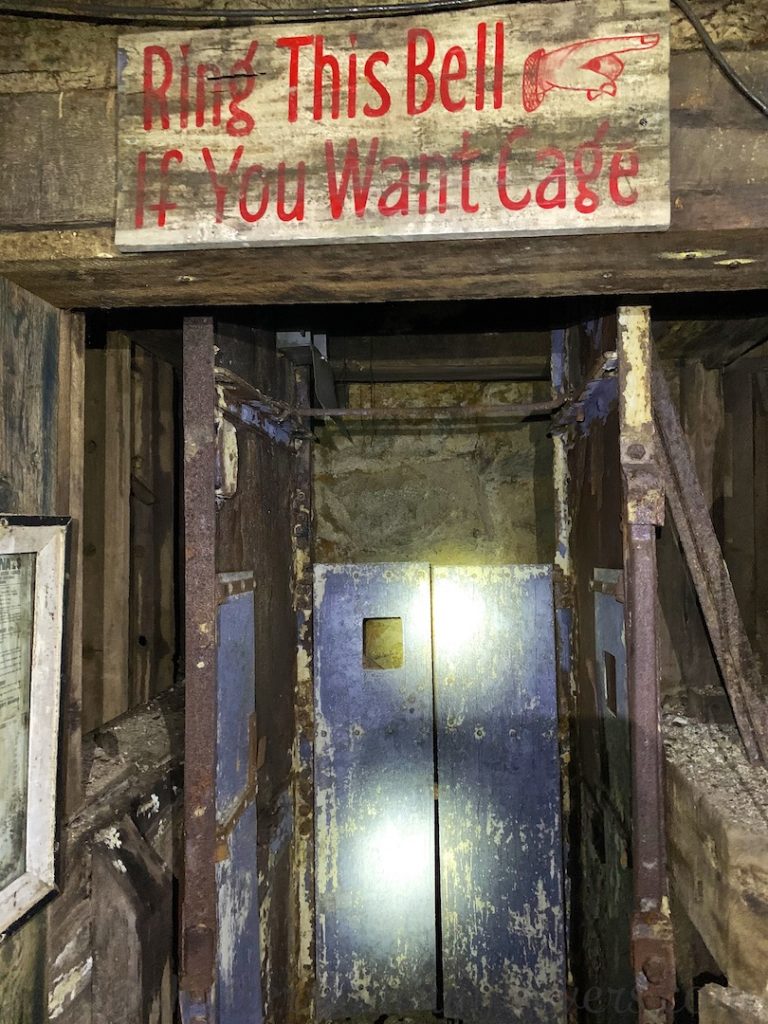
Looking down the shaft it was possible to see the water at the bottom, it looked a long way down!
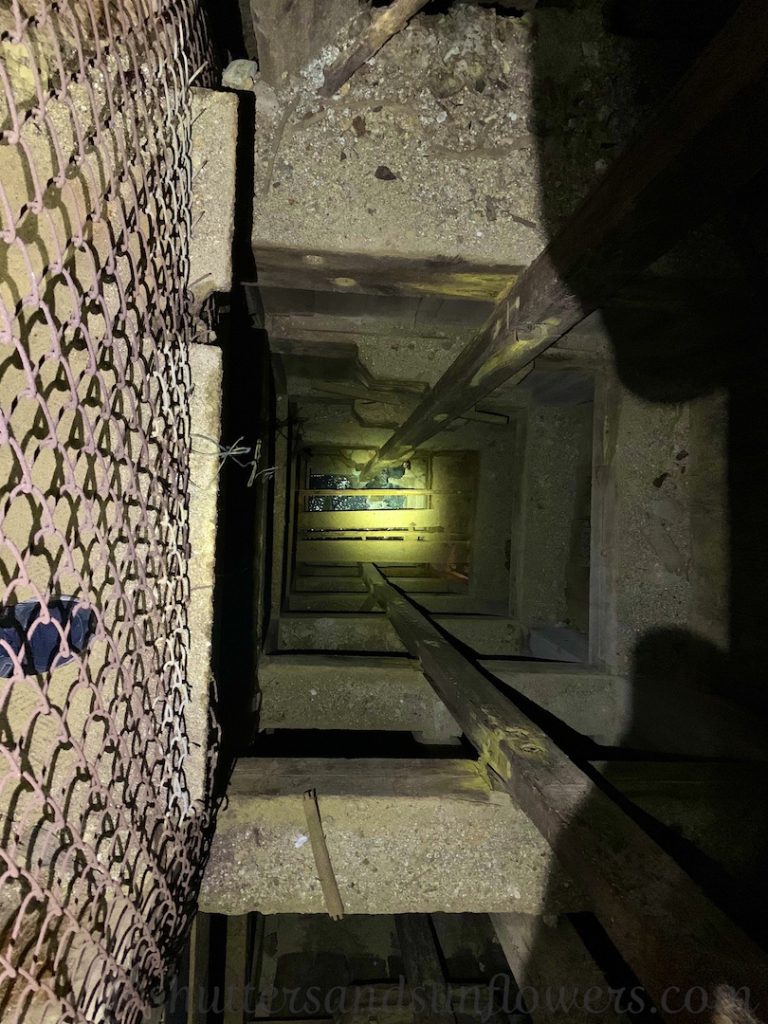
It was a fascinating tour. Back outside we drove passed the snow covered terraces of the former mining area. Close by was the infamous Berkley Pit, a large truck-operated open-pit copper mine operational until 1982. By 1980 nearly 1.5 billion tons of material had been removed from the Pit, including more than 290 million tons of copper ore. The pit enabled Butte to claim the title ‘The Richest Hill on Earth’. Today the pit is extremely toxic, laden with heavy metals and dangerous chemicals that leach from the rock. Impressive strides have been made to reduce its toxicity but it currently it remains as a hazardous blight on the landscape.

We had arrived in Butte that morning in a snow storm which seemed determined to stay. A very wintery scene was waiting for us back by the Big Hole River. It had been a full and interesting day stepping back into the past.
The next few days we stayed close to home, sadly unable to fish or float the river bundled up by a log fire! 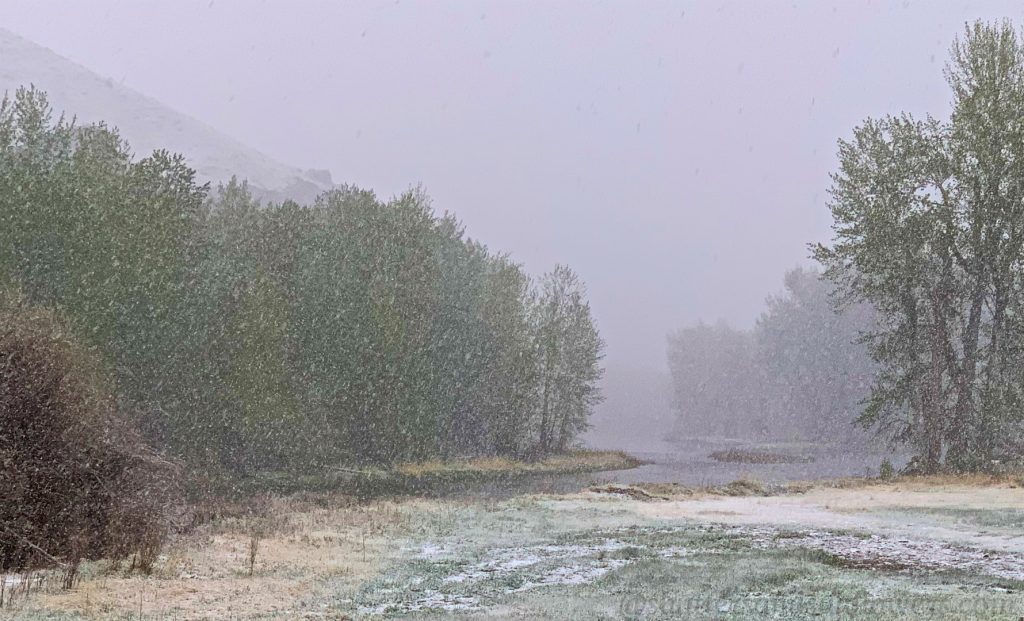
I had my doubts as to whether the weather was going to permit us to continue our journey.
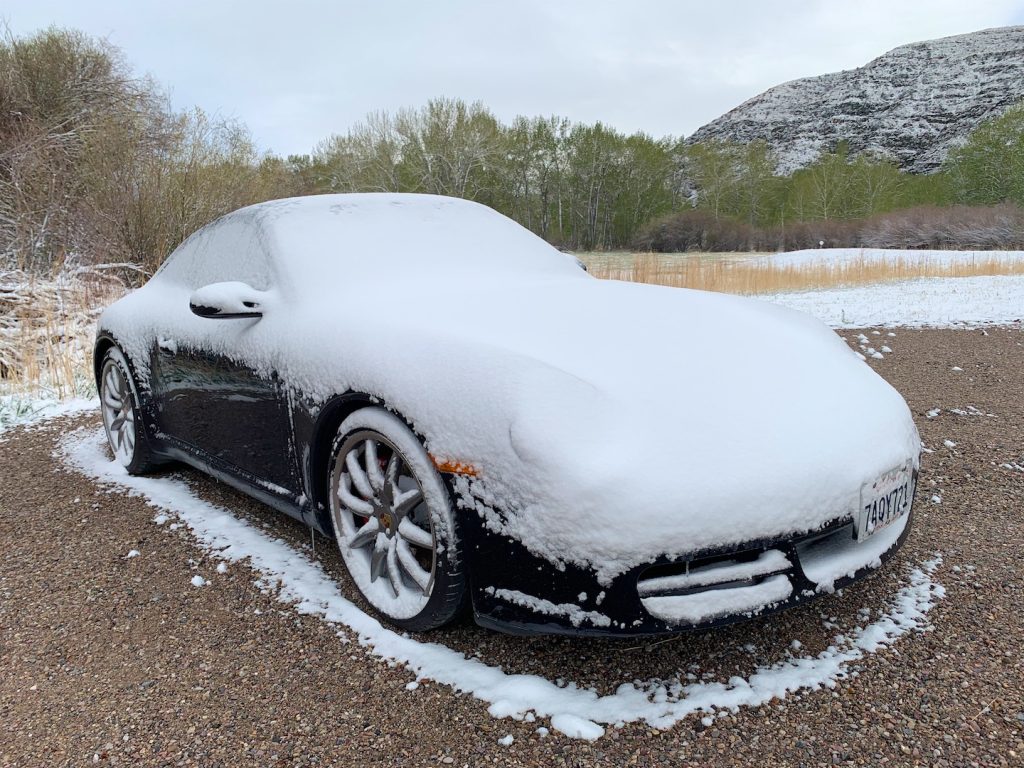
My driver of course was undaunted. Ice scraper and snow chains at the ready, three days later we set off again, heading 300 miles north to Glacier National Park, Montana!

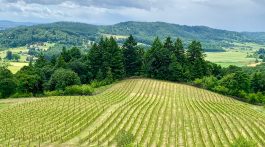
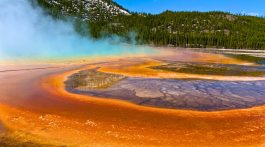
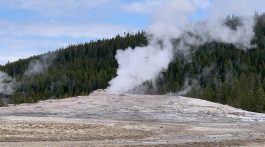

Really well done with great photos, it is an intriguing area!
Thank you so much for being our host Jim. Next time I’m looking forward to learning to cast and float with my favorite ‘professional’!
Having visited Butte many times, your visit opened our eyes even more. Next time, weather permitting of course, they’ll be a lot more fishing and some amazing hiking.
So happy you could visit us on the Big Hole!
Thank you so much for having us to stay and arranging those incredible tours. We loved it all and had so much fun and will most certainly return!!
Brilliantly written. So much to see and so informative. What a fun trip
Thank you Deb, hope you can go there too, it’s fabulous!
Enjoying your tour photos and stories. Would love to see a photo of you, our guide.
You’re too kind, but thank you!
Caroline,
What a great presentation of this fabulous land…Loved all the photos and explanations…thank you for sharing!
So glad you enjoyed it, I have to catch up and finish the final posts about our incredible journey
Fascinating! Thanks for sharing.
So happy you enjoyed it!